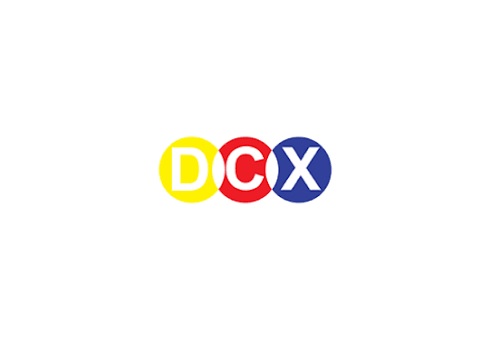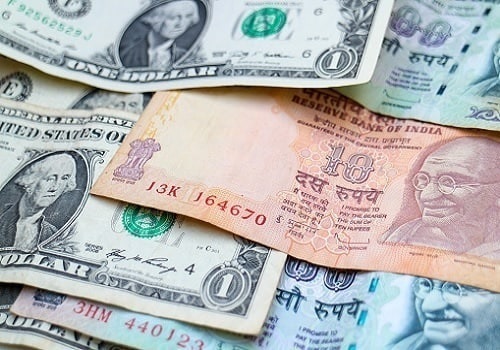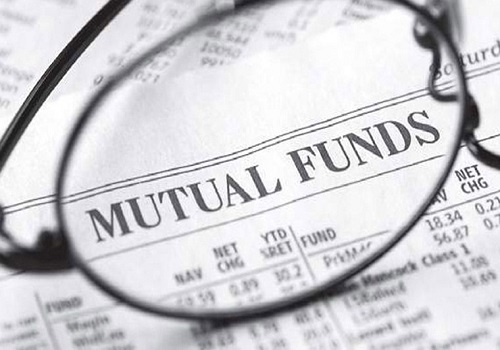Cottoncandy trading range for the day is 54050-54710 - Kedia Advisory

Follow us Now on Telegram ! Get daily 10 - 12 important updates on Business, Finance and Investment. Join our Telegram Channel
Gold
Gold prices rose by 0.64% to Rs.76,748, driven by expectations of rising inflation under President-elect Donald Trump’s potential policy shifts, which include tariffs, deregulation, and tax changes. Markets are focusing on upcoming U.S. data, including job openings, employment reports, and the Fed's December FOMC minutes, to gauge economic health and monetary policy direction. Fed Chair Jerome Powell indicated caution on further rate cuts, reflecting mixed market sentiment. Globally, gold demand dynamics showed divergence. In India, rising prices and a depreciating rupee widened discounts to a three-month high of $14 per ounce, dampening domestic demand. December gold imports in India are expected to decline due to the absence of major festivals and costlier acquisition prices. Central banks continued robust gold purchases, with October net buying at 60 tons—the highest in 2024. The RBI led purchases, adding 27 tons in October and 77 tons year-to-date, marking a five-fold increase over 2023. Turkey and Poland also bolstered reserves significantly. Total global gold demand in Q3 rose 5% year-on-year to 1,313 tons, driven by resurgent institutional flows and bar and coin investments, despite reduced jewellery demand. Technically, the market witnessed short covering as open interest fell by 3.09% to 12,294 contracts while prices gained Rs.488. Gold has immediate support at Rs.76,370, with a potential test of Rs.75,985 on downside breaches. Resistance is at Rs.76,985, with further gains potentially testing Rs.77,215.
Trading Ideas:
* Gold trading range for the day is 75985-77215.
* Gold gains on bets President-elect Donald Trump's policies will likely push up inflation.
* China's net gold imports via Hong Kong in November more than doubled from October, marking the highest level in seven months
* Gold exports from Switzerland rose in November due to a jump in supplies to India and some revival of deliveries to China
Silver
Silver prices declined by 0.34% to Rs.87,233 as investors responded to signals of a hawkish Federal Reserve. Resilient U.S. labor market data and persistent inflation prompted FOMC members to scale back expectations for rate cuts in 2025. The Fed has cut interest rates by 100bps since initiating its easing cycle, including a 50bps cut in September following an uptick in unemployment. However, cautious Fed signals weigh on non-yielding assets like silver, contributing to its slight Q4 losses. Geopolitical tensions provided a counterbalance to the bearish sentiment, with heightened safe-haven demand amid ongoing conflicts in Ukraine, Gaza, Lebanon, and missile strikes from Iran. On the supply-demand front, the Silver Institute forecasts a 4% reduction in the global silver deficit to 182 million ounces in 2024. Industrial demand is expected to reach record highs, driven by electronics, solar panels, and EV sectors, while jewellery consumption recovers. However, a 16% decline in physical investment offsets these gains. Total supply is set to rise 2%, with mine output up 1% and recycling increasing by 5%, led by higher silverware scrap in Western markets. Technically, the market experienced fresh selling as open interest rose by 2.81% to 34,010 contracts while prices fell by Rs.298. Silver has immediate support at Rs.86,950, with further downside testing Rs.86,660. Resistance is seen at Rs.87,640, with potential upside testing Rs.88,040.
Trading Ideas:
* Silver trading range for the day is 86660-88040.
* Silver dropped as investors continued to heed signs of a hawkish Federal Reserve.
* Resilient labor market data per payroll counts and evidence of stubborn inflation drove FOMC members to project fewer rate cuts by the Fed in 2025.
* Markets anticipate signals regarding US economy under the incoming Trump administration and Fed’s interest rate outlook for 2025.
Crude oil
Crude oil prices gained 0.93% to settle at Rs.6,166, supported by a larger-than-expected drawdown in U.S. crude inventories and optimism surrounding Chinese economic growth. U.S. crude stocks fell by 4.3 million barrels for the week ending December 20, exceeding expectations of a 2-million-barrel decline. Similarly, distillate inventories dropped by 1.7 million barrels, outperforming the forecasted 700,000-barrel reduction. However, gasoline inventories increased by 1.6 million barrels, defying predictions of a 1-million-barrel draw. The World Bank's improved forecast for Chinese economic growth in 2024 and 2025, coupled with Beijing's issuance of special treasury bonds worth 3 trillion yuan ($411 billion), has fueled hopes of increased demand from the world's top oil importer. Conversely, the U.S. Energy Information Administration (EIA) has revised global oil demand growth forecasts downward, estimating an increase of 1.2 million barrels per day (bpd) in 2024 to 104.3 million bpd, 300,000 bpd below previous expectations. U.S. production is also projected to grow modestly, with output for 2025 now expected at 13.54 million bpd, down 1% from earlier forecasts. Crude oil experienced fresh buying, with open interest increasing by 13.05% to 12,218 contracts while prices gained Rs.57. Support is at Rs.6,109, with further downside testing Rs.6,051. Resistance is seen at Rs.6,201, with potential upside to Rs.6,235.
Trading Ideas:
* Crudeoil trading range for the day is 6051-6235.
* Crude oil prices rose buoyed by a larger-than-expected drawdown from U.S. crude inventories last week.
* Optimism over Chinese economic growth has also sparked hopes of higher demand next year from China.
* Stocks of crude oil in the United States fell by 4.3 million barrels
Natural gas
Natural gas prices fell sharply by 7.2% to settle at Rs.310.4 amid profit booking, despite colder-than-normal January forecasts that are expected to increase heating demand. Recent forecasts of a cold front in the U.S. have led to an 18 billion cubic feet increase in demand projections. The Energy Information Administration (EIA) reported a withdrawal of 93 billion cubic feet (bcf) from storage for the week ending December 20, slightly below market expectations of a 99 bcf draw. Total stockpiles stood at 3,529 bcf, marking the sixth consecutive weekly decline, though inventories remain 0.4% above last year’s levels and 4.9% above the five-year average. The start of the withdrawal season has been bolstered by the largest pre-winter natural gas storage levels since 2016, totaling 3,922 bcf at the end of October. The injection season saw lower-than-average volumes due to already high inventory levels. However, late-season injections exceeded their five-year averages, further supporting storage levels. Internationally, concerns over reduced Russian gas supplies to Europe have increased demand for U.S. LNG, with President-elect Trump pledging to issue more LNG export permits. This is likely to shift U.S. firms' focus toward exports rather than domestic sales, amid ample domestic supply. The market experienced long liquidation, with open interest dropping by 38.95% to 11,695 contracts as prices fell by Rs.24.1. Support is at Rs.297.1, with further downside to Rs.283.8. Resistance is seen at Rs.334.1, with potential upside to Rs.357.8.
Trading Ideas:
* Naturalgas trading range for the day is 283.8-357.8.
* Natural gas dropped on profit booking amid forecasts for a colder-than-normal January.
* US utilities withdrew 93 billion cubic feet of natural gas from storage to lower total stockpiles to 3,529 bcf
* Fresh forecasts of a cold front in the US halfway through January drove the industry to raise demand forecasts.
Copper
Copper prices fell by 1.15% to settle at Rs.793.2, driven by cautious sentiment as traders awaited critical economic data from China. Concerns over the Chinese property market, the largest consumer of base metals, weighed on sentiment despite government policy support aimed at stabilizing the sector. Additionally, expectations of increased U.S. tariffs on Chinese imports under President-elect Trump further pressured the market. On the supply side, global refined copper markets remain volatile. Peru anticipates flat copper production in 2025, while Chile’s production is projected to range between 5.4 and 5.6 million tons. However, BNP Paribas forecasts a 491,000-ton surplus in 2025, the largest since 2020, and has downgraded its average copper price estimate by 5% to $9,020 for the year. The International Copper Study Group (ICSG) reported a deficit of 41,000 metric tons in October, down from a 136,000 metric tons deficit in September, reflecting improved supply dynamics. In China, copper imports rose to a one-year high of 528,000 tons in November, supported by lower prices and restocking efforts. However, imports of copper concentrate dropped 7.8% year-on-year to 2.25 million tons in November. The copper market witnessed fresh selling, with open interest rising by 10.51% to 9,651 contracts. Support is seen at Rs.788.3, with further downside to Rs.783.4. Resistance is expected at Rs.800.5, and a breakout above this level could push prices toward ?807.8.
Trading Ideas:
* Copper trading range for the day is 783.4-807.8.
* Copper dropped as market participants awaited economic data from China.
* Chinese policymakers hope policy support measures introduced late this year will bolster the property market.
* On a week-on-week basis, copper inventories in warehouses monitored by the Shanghai Futures Exchange rose 4.7% on Dec. 27
Zinc
Zinc prices fell by 1.17% to settle at ?278.85, driven by expectations of increased domestic refined zinc production in December 2024. Production is set to rise by over 20,000 metric tons (5% MoM), despite a cumulative decline of over 6% YoY in 2024. Increased output in regions such as Qinghai, Inner Mongolia, Xinjiang, Hunan, and Shaanxi contributed to the higher-than-expected production figures. Additionally, smelter production in Henan, Gansu, Sichuan, and Inner Mongolia saw smaller reductions than anticipated. China's economic outlook remains a mixed bag. While refined zinc production for November increased marginally by 0.3% MoM, it registered a 12% YoY decline. Retail sales growth in November slowed, signaling weakening consumption, while new home prices dropped for the 17th consecutive month, underscoring challenges in the property sector. However, support measures like Beijing's planned issuance of $411 billion in special treasury bonds offer some optimism for demand. Globally, the zinc market showed a deficit of 69,100 metric tons in October, up from 47,000 tons in September, as refined metal production fell 1.7% due to limited zinc concentrate availability. Mine output declined 3.8% YoY, with reduced production in Canada, China, South Africa, and Peru. The zinc market saw long liquidation, with open interest decreasing by 0.68% to 2,915 contracts. Support is at Rs.276.7, with further downside to Rs.274.6. Resistance is at Rs.282.3, and a break above this could push prices toward Rs.285.8.
Trading Ideas:
* Zinc trading range for the day is 274.6-285.8.
* Zinc dropped as China's refined zinc production in December will increase by over 5% MoM.
* Zinc inventories in warehouses monitored by the SHFE fell 24.67% from last Friday
* Data showed that retail sales growth in China slowed more than expected in November, reflecting weakening consumption.
Aluminium
Aluminium prices edged down by 0.02% to Rs.241.9, as global primary aluminium output rose 3% YoY to 6.04 million tonnes in November, according to the International Aluminium Institute. However, downside was limited amid optimism for China's fiscal stimulus, with plans to issue 3 trillion yuan ($411 billion) in special treasury bonds to revitalize the economy. Global refined aluminium remained in a supply deficit of 40,300 tonnes in October, with production at 6.08 million tonnes and consumption at 6.12 million tonnes. For the first ten months of 2024, the cumulative shortfall was 332,600 tonnes, reflecting tight market conditions. In China, aluminium production in November increased 3.6% YoY to 3.71 million metric tonnes, supported by new capacity additions despite declining industry profitability. The daily output averaged 123,667 tonnes, up 3% from October. Inventories monitored by the Shanghai Futures Exchange fell by 5.23% WoW, signaling steady demand. Additionally, exports of unwrought aluminium and related products surged 17% YoY to 5.5 million tonnes in the first ten months of the year. October alone saw exports rise 31% YoY to 577,000 tonnes. Aluminium saw fresh selling as open interest increased by 2.18% to 3,517 contracts. Support levels are at Rs.241.1, with further downside to Rs.240.3. Resistance is expected at Rs.242.6, and a break above this could push prices toward Rs.243.3.
Trading Ideas:
* Aluminium trading range for the day is 240.3-243.3.
* Aluminium dropped as Global primary aluminium output in November rose 3% year on year.
* China’s policymakers are planning to boost bond sales.
* Global refined aluminum market in short supply of 40,300 tons in October.
Cotton candy
Cottoncandy prices edged up by 0.39% to Rs.54,370, supported by increased cotton yarn prices in South India due to strong garment industry demand and robust export orders. Despite this, global cotton production for CY 2024-25 is forecasted to rise by 1.2 million bales to 117.4 million bales, driven by higher outputs in India and Argentina. However, North Indian states like Punjab, Haryana, and Rajasthan reported a significant 43% drop in kapas arrivals until November 30 compared to the previous year, causing supply chain concerns. Farmers are holding back produce in anticipation of higher prices, exacerbating raw material shortages for ginners and spinners. India's cotton pressing estimate for 2024-25 remains steady at 302.25 lakh bales of 170 kgs each, while consumption is pegged at 313 lakh bales. Cotton imports are expected to surge to 25 lakh bales, up by 9.8 lakh bales from the previous year. By November 30, around 9 lakh bales had arrived at Indian ports. Closing stock for September 2025 is projected at 26.44 lakh bales, a decline from last year’s 30.19 lakh bales. On the global front, U.S. production is revised higher to 14.3 million bales, and world production is up to 117.4 million bales. Increased consumption in India, Pakistan, and Vietnam offsets declines in China. Cottoncandy witnessed fresh buying as open interest rose by 1.09% to 371 contracts. Support is seen at Rs.54,210, with a potential downside to Rs.54,050. Resistance is expected at Rs.54,540, and a breakout above could push prices to Rs.54,710.
Trading Ideas:
* Cottoncandy trading range for the day is 54050-54710.
* Cotton gains as cotton yarn prices increased due to rising demand from garment industries and strong export orders.
* India's cotton production in 2024/25 is likely to fall by 7.4% from a year ago
* Cotton production is projected to increase in China, Brazil, and Argentina, more than offsetting reductions in the US and Spain – USDA
* In Rajkot, a major spot market, the price ended at 25660.15 Rupees gained by 0.07 percent.
Turmeric
Turmeric prices rose by 1.55% to Rs.14,826 on strong buying activity, driven by reports of low supplies ahead of the new crop's arrival. Arrivals increased to 9,030 bags, up from 7,965 in the previous session, with major trading centers like Erode and Hingoli observing higher inflows, although Hingoli markets remained closed. Low stock levels in the market are keeping prices firm, despite expectations of a good-to-excellent crop condition this year. Sowing activity has shown significant growth, particularly in Maharashtra, Telangana, and Andhra Pradesh, with a 30-35% increase compared to last year. The overall sowing area is estimated to rise from 3.25 lakh hectares to 3.75-4 lakh hectares. However, prolonged rains have delayed harvesting in some regions, potentially impacting the timelines of fresh supplies. Turmeric production for 2024 is projected at 45-50 lakh bags, supported by better weather conditions than last year. On the export front, turmeric exports rose by 6.57% to 108,880 tonnes during April-October 2024 compared to the same period last year. October 2024 exports surged by 57.22% year-on-year to 15,938 tonnes, reflecting robust international demand. Imports during the same period also saw a sharp increase of 118.99%, signaling rising domestic consumption. Technically, the market witnessed fresh buying, with open interest increasing by 1.82% to 12,310 contracts as prices gained Rs.226. Support is seen at Rs.14,468, with a break potentially testing Rs.14,108. Resistance is expected at Rs.15,144, with a move above likely to target Rs.15,460.
Trading Ideas:
* Turmeric trading range for the day is 14108-15460.
* Turmeric gains on strong buying activity amid reports of low supplies till the arrival of new crop.
* However upside seen limited as turmeric crop is reported to be in good to excellent condition.
* In Indonesia, dry weather has accelerated harvesting, which is currently at peak levels.
* In Nizamabad, a major spot market, the price ended at 14040.3 Rupees gained by 2.82 percent.
Jeera
Jeera prices rose by 0.82% to Rs.24,550 due to delayed sowing in Gujarat and Rajasthan, key producing states, caused by higher temperatures and poor germination. Gujarat reported seeding on only 57,915 hectares as of November 25, significantly lower than last year’s 2.44 lakh hectares and far below the normal 3.81 lakh hectares. The sowing delay of 20-25 days is expected to impact production, with an estimated 10-15% decline in Rajasthan and a 10% overall production decrease. Despite challenges, domestic and international demand remains robust. Indian cumin, priced at $3,050 per tonne, remains the cheapest globally, making India the preferred source, particularly for countries like China. Middle Eastern tensions have boosted export demand from Gujarat, while festive seasons in Europe and other regions have further supported exports. Jeera exports during April-October 2024 rose by 77.37% to 135,451 tonnes compared to 76,368 tonnes during the same period last year. October 2024 exports surged by 161.04% year-on-year to 16,257 tonnes. In Unjha, a major spot market, prices ended slightly lower at Rs.24,349.50, down 0.09%. Technically, the market is witnessing short covering, with open interest dropping by 7.94% to 1,809 contracts while prices gained Rs.200. Jeera has immediate support at Rs.24,390, with a breach possibly testing Rs.24,220. Resistance is now likely at Rs.24,650, with a move above potentially targeting Rs.24,740.
Trading Ideas:
* Jeera trading range for the day is 24220-24740.
* Jeera prices gained as sowing has been delayed
* Higher day temperatures in the past few weeks has impacted the seeding of jeera and has also led to poor germination in various places.
* In Gujarat, jeera sowing has taken place in only 57,915 hectares till November 25 during the rabi 2024-25 cropping season.
* In Unjha, a major spot market, the price ended at 24349.5 Rupees dropped by -0.09 percent
Views express by all participants are for information & academic purpose only. Kindly read disclaimer before referring below views























